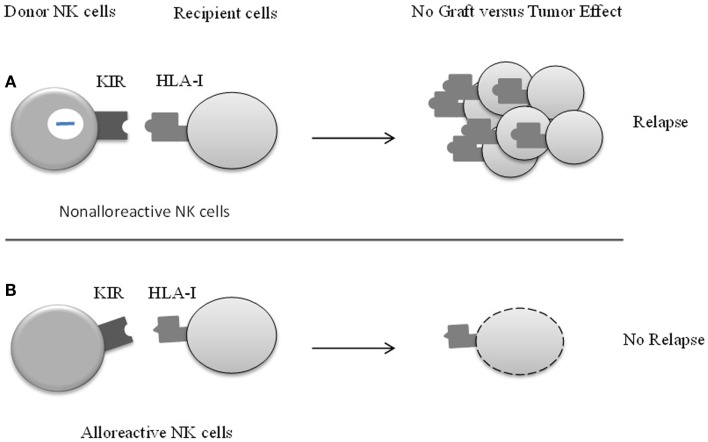Figure 1.
The effect of KIR/HLA class I mismatch in patients undergoing allogenic stem cells transplantation (HSTC).The main challenge in HSTC is to keep the balance between conserving the graft versus leukemia (GvL) effect on the one hand and preventing risk of relapse on the other. (A) Killer cell immunoglobulin-like receptor (KIR) of donors NK cells is engaged by corresponding HLA ligand, which inhibits NK-cell function. Donor NK cells are non-alloreactive and do not kill recipient’s blasts, which leads to the relapse of patient. (B) The concept and recognition of KIR-ligand incompatibility (also known as KIR-ligand mismatch) has important implications. KIR-mismatch is an independent predictor of survival in patients. Graft versus tumor NK-cell alloreactivity reduces the risk of leukemia relapse, and markedly improves event-free survival.

